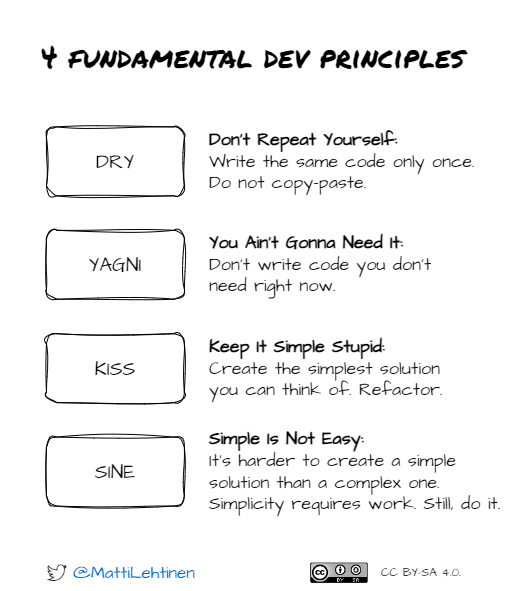SQL Anti-Patterns
1. Mishandling Excessive CASE WHEN Statements
Bad Query:
CREATE VIEW order_dashboard AS
SELECT
order_id,
CASE
WHEN status_code = 1 THEN 'Out of Stock'
WHEN status_code = 2 THEN 'In Stock'
WHEN status_code = 3 THEN 'Discontinued'
-- ... 50 more status codes
END AS status_name
FROM orders;
Why this is wrong: Logic is duplicated across multiple views/queries. Other developers copy-paste it or use raw codes. Creates inconsistency and maintenance nightmare.
Right way:
CREATE TABLE status_dimension (
status_code INT PRIMARY KEY,
status_name VARCHAR(100)
);
INSERT INTO status_dimension VALUES
(1, 'Out of Stock'),
(2, 'In Stock'),
(3, 'Discontinued');
SELECT o.order_id, s.status_name
FROM orders o
JOIN status_dimension s ON o.status_code = s.status_code;
2. Using Functions on Indexed Columns
Bad Query:
SELECT * FROM customers
WHERE UPPER(name) = 'JOHN SMITH';
Why this is wrong:
The UPPER() function prevents the database from using an index on the name column. Forces a full table scan instead of a fast index lookup.
Right way:
create an indexed
UPPER(name)column
or
SELECT * FROM customers
WHERE name = 'john smith';
Using functions on indexed columns in the WHERE clause can prevent the query engine from effectively using the index. The index stores the raw data of the column. When a function is applied, the database needs to compute the function for each row to compare it with the search criteria. The benefit of the index is negated.
3. Using SELECT * In Views
Bad Query:
CREATE VIEW customer_summary AS
SELECT * FROM customers;
CREATE VIEW customer_summary AS
SELECT * FROM customers;
If someone adds columns to customers later, this view inherits them automatically. Schema changes break downstream views. You also bring in columns you don’t need.
Right way:
CREATE VIEW customer_summary AS
SELECT
customer_id,
customer_name,
email,
registration_date
FROM customers;
4. Overusing DISTINCT to Fix Duplicates
Bad Query:
SELECT DISTINCT o.order_id, c.customer_name, COUNT(*)
FROM orders o
JOIN customers c ON o.customer_id = c.customer_id
GROUP BY o.order_id, c.customer_name;
Why this is wrong:
DISTINCT masks the real problem: a bad join.
The DISTINCT keyword hides incomplete join logic that will cause inconsistent metrics when others use this data.
Right way:
use INNER join
SELECT o.order_id, c.customer_name, COUNT(o.order_id) as order_count
FROM orders o
INNER JOIN customers c ON o.customer_id = c.customer_id
GROUP BY o.order_id, c.customer_name;
5. Excessive View Layer Stacking
Bad Query:
CREATE VIEW v1 AS SELECT * FROM base_table WHERE status = 'active';
CREATE VIEW v2 AS SELECT * FROM v1 WHERE amount > 100;
CREATE VIEW v3 AS SELECT * FROM v2 WHERE region = 'US';
SELECT * FROM v3;
Why this is wrong: Each query expands all nested views. Performance degrades. Debugging requires tracing through multiple layers.
Right way:
CREATE MATERIALIZED VIEW sales_summary AS
SELECT order_id, customer_id, amount, region
FROM base_table
WHERE status = 'active'
AND amount > 100
AND region = 'US';
SELECT * FROM sales_summary;
6. Nested Subqueries That Do Too Much
Bad Query:
SELECT * FROM (
SELECT * FROM (
SELECT * FROM (
SELECT order_id, amount FROM orders WHERE status = 'complete'
) WHERE amount > 100
) WHERE customer_id IN (SELECT id FROM vip_customers)
) WHERE order_date > '2024-01-01';
Why this is wrong: Deep nesting (3+ levels) is hard to debug and understand. Logic gets scattered. Hard to test individual steps.
Right way:
WITH completed_orders AS (
SELECT order_id, customer_id, amount, order_date
FROM orders
WHERE status = 'complete'
),
large_orders AS (
SELECT * FROM completed_orders
WHERE amount > 100
),
vip_orders AS (
SELECT lo.*
FROM large_orders lo
JOIN vip_customers v ON lo.customer_id = v.id
)
SELECT * FROM vip_orders
WHERE order_date > '2024-01-01';
Summary
| Anti-Pattern | Fix |
|---|---|
| Scattered CASE WHEN | Centralize in dimension table |
| Functions on indexed columns | Index the function or normalize input |
| SELECT * in views | Explicitly list columns |
| DISTINCT to fix duplicates | Fix the join logic |
| Stacked views | Materialize and flatten |
| Deep nested subqueries | Use CTEs |
Good practices
whether writing sql queries or code in python, go, rust, node, react, …

from DRY, YAGNI, KISS and SINE - 4 Most Important Software Development Principles